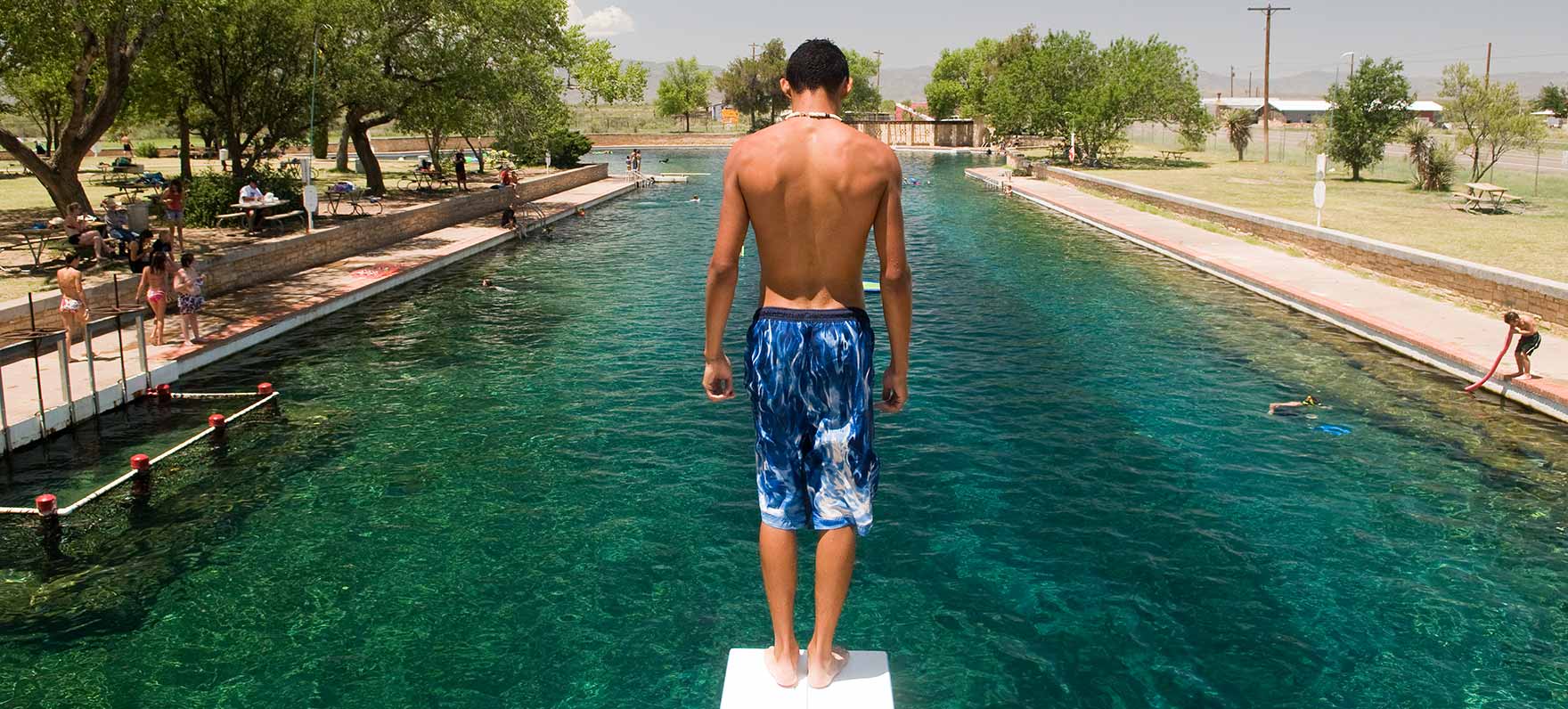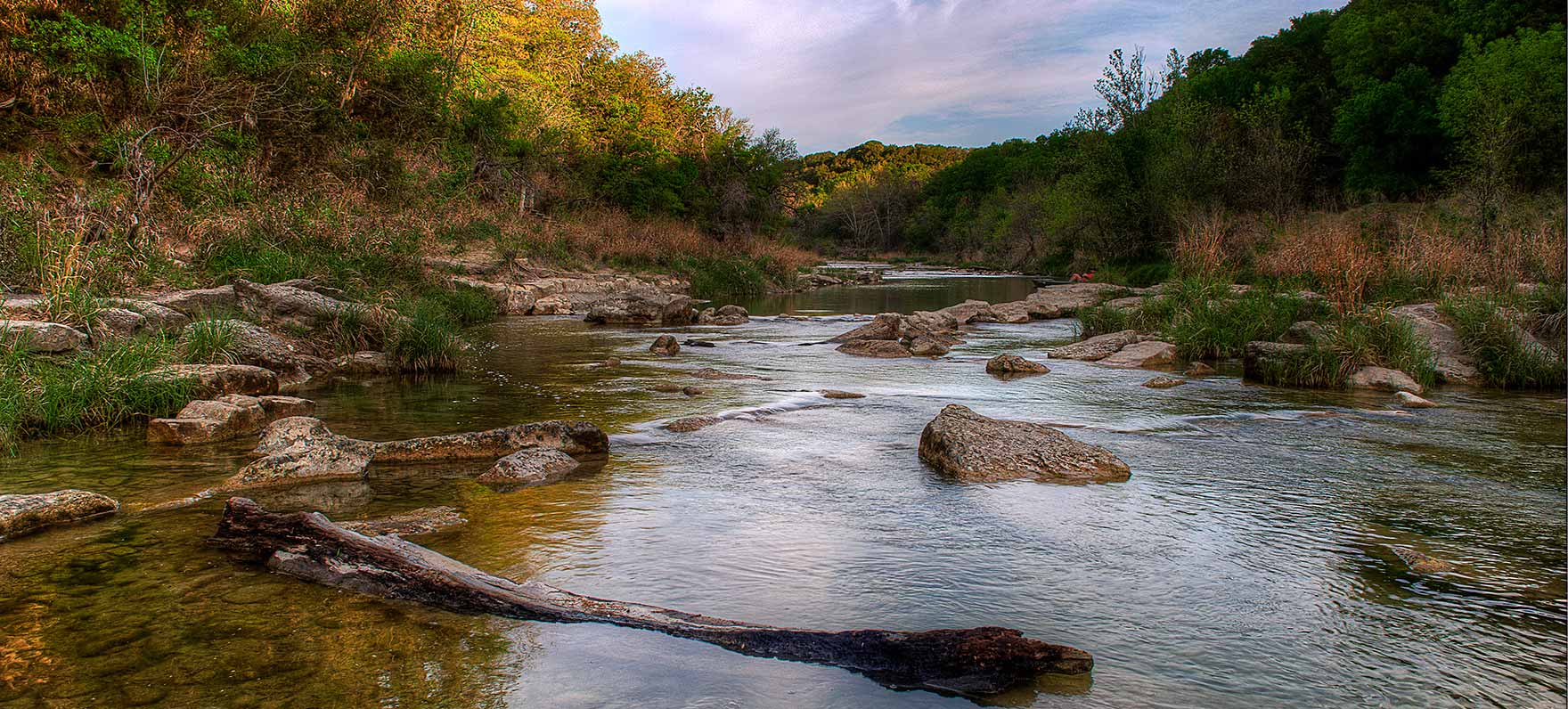
(Image: Texas Parks and Wildlife Department)
It doesn’t make sense if you step back and look at it. Parks and wildlife areas are preserved areas, protected from commercial and industrial development. It’s a park after all, right? Well, sure, unless there is recoverable oil and gas below it. If that’s the case, sorry kids. Drillers could get first dibs.
In fact, there is a long relationship between Big Oil and Gas and state parks. Texas allows drilling in its state parks, wildlife management areas, and other areas under the control and management of Texas Parks and Wildlife Department.
How much are we talking about here?
Currently, Parks & Wildlife operates 95 state parks, covering 631,000 acres, and 54 wildlife management areas (WMAs) covering 790,000 acres. According to Parks & Wildlife, about 20 state parks and 11 WMAs have active oil and gas leasing operations, though some are currently not active. In many cases, Parks & Wildlife doesn’t even own the mineral rights below “our” land (Also, exploration might have begun before an area became a state park or WMA). Parks & Wildlife believe they only own the mineral rights in about 40% of the land they actually are in charge of managing. That leaves 60% of the mineral rights under those great green spaces in private hands.
But the state allows oil and gas drilling in state parks even when the state owns the mineral rights.
What Parks Are They Drilling?
According to an information request made by the Sierra Club to the General Land Office, since 2005, many parks and wildlife areas have been leased for oil and gas development. Here are a few of them.
Big Spring State Recreation Area
Chaparral Wildlife Management Area
Cleburne State Recreation Area
Gus Engeling Wildlife Management Area
J D Murphree Wildlife Management Area
Las Palomas Wildlife Management Area
Lockhart State Recreation Area
Matador Wildlife Management Area
McGillvray & Muse Leona McKie Wma
Unspecified TPWD (Starr and Anderson counties)
Texas State Railroad State Historic Park
Washington-On-The-Brazos State Historic Park
Wonky history if you need it... In 1949, the Texas Legislature added a provision in the state’s Vernon’s Civil Statute that created a separate “Board for Lease of State Park Lands” that allowed a three-member Board to lease mineral rights in some 50 parks, with money going to a “State Park Development Fund.” It is important to note that the Board for Lease of State Lands is intended to lease mineral rights where the state is the owner. Since 1949, however, the underlying civil statute has been amended several times, including through the creation of Chapter 34 of the Natural Resource Code, which establishes specific procedures for the leasing of parkland and other areas under the control of Parks & Wildlife. In fact, the State Park Development Fund was repealed in 1985, and today money from oil and gas revenues flows into several Park accounts, notably Fund 9 (Game, Fish and Water Safety) and Fund 64 (State Parks).
Who Makes These Decisions?
Once oil and gas companies ask to have lands considered for leasing, Parks & Wildlife staff and commissioners may be involved in suggesting or assessing proposed lands for leasing, but a separate board known as the Board for Lease: Texas Parks and Wildlife Department approves leases. The Board is composed of three members. Currently, the Board is composed of GLO Commissioner George P. Bush (former President George H.W. Bush’s grandson and son of former Florida Governor Jeb Bush), Corky Kuhlmann, Land Conservation Manager at Texas Parks and Wildlife Foundation, and Wesley Lloyd, an oil and gas attorney from Waco. However, according to a recent Senate Nominations Committee hearing notice, Clifton Earl Bickerstaff, an Amarillo banker, has been nominated to the Board of Lease, having been appointed on August 10, 2016. He is not scheduled to appear in person to his hearing on February 23.
The leasing process itself is done through sealed bids at the General Land Office, but it is this board that decides whether to proceed on a proposed lease.
Are They A Rubber Stamp?
According to Parks & Wildlife, they attempt to prevent any surface use of state parks, and most leases prohibit surface occupancy, preferring that oil and gas activity occur off-site, even though the “hydraulic fracturing” or “fracking” occurs below the state park or wildlife management area. However, in some cases, where it is not possible, and where the three-member board decides to allow oil and gas exploration, Parks & Wildlife will engage in a Surface Use Agreement (SUA) that would create the conditions and hours when an oil and gas company could operate inside a park or wildlife management area. Among the provisions that the state will negotiate include location of facilities, timing of operations, facility aesthetics, traffic, noise, access, odors, fencing and incident reporting, and site restoration.
While TPWD has no regulatory authority over leasing that occurs off-site, they do often work with oil and gas developers to minimize impacts to state parks and state park visitors.
It Doesn’t Make A Lot of Cents
Recent data indicate that while new leasing has not been happening at a great pace compared to other parts of the state, Parks & Wildlife and the Leasing Board continually approve new leases.
According to the 2015 Biennial Revenue Estimate, $3.25 million per year would flow from oil and gas leasing and production from state parkland and wildlife management areas. That’s not huge when compared to the $180 million expected from user fees and other revenue for Parks & Wildlife. That’s less than 2 percent.
This Should Be an Easy Lift
There areas of Texas that Big Oil & Gas can’t touch, but it’s doubtful this will happen given the record. Whether it’s in urban areas...
(Video: Zac Jehle, YouTube)
...or areas that are supposed to be left untouched...

(Image: Texas Parks and Wildlife Department)
...it is clear that oil and gas interests trump all others, unless we demand change.
Step 1: Discourage new leases. The Parks and Wildlife Department has the power to put conditions on many of these leases and limit the potential damage to parkland and other areas through Surface Use Agreements (SUAs). If they had strong leadership, perhaps they could even leverage their position to phase out existing contracts and discourage new lease proposals.
Unfortunately, a few Texas Parks and WIldlife Commissioners have oil and gas ties. Perhaps the biggest one is Energy Transfer Partners CEO Kelcy Warren. Warren is the pipeline billionaire behind the notorious Dakota Access Pipeline in North Dakota, and also the destructive Trans-Pecos and Comanche Trail pipelines currently under construction in West Texas.
Step 2: Remove Kelcy Warren from the Commission.
Where is the leadership to explore new revenue streams that could eliminate the need for oil and gas revenue? There are many more natural areas that could be opened up to more visitors, such as the Palo Pinto Mountains State Park. What would happen if we expanded outreach efforts to drive more Texans to explore and enjoy the outdoors? There is little reason to rely on oil and gas development within our treasured lands. We believe that oil and gas development and public lands do not go together.
Step 3: Parks & Wildlife, the General Land Office, and the Texas Legislature should increase oversight both of oil and gas drilling that is already occurring, as well as nearby activities that have the potential to impact important habitat and recreation areas. Last year’s announcement of a huge shale play known as Alpine High has increased calls for a top-down review of how the state looks at the impacts of oil and gas development on special places like Balmorhea State Park.
These are your parks and wildlife areas, Texas. The oil and gas industry should stay out.